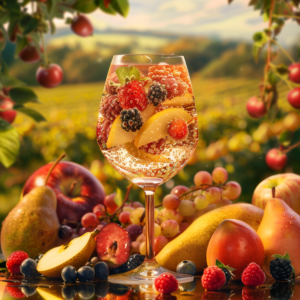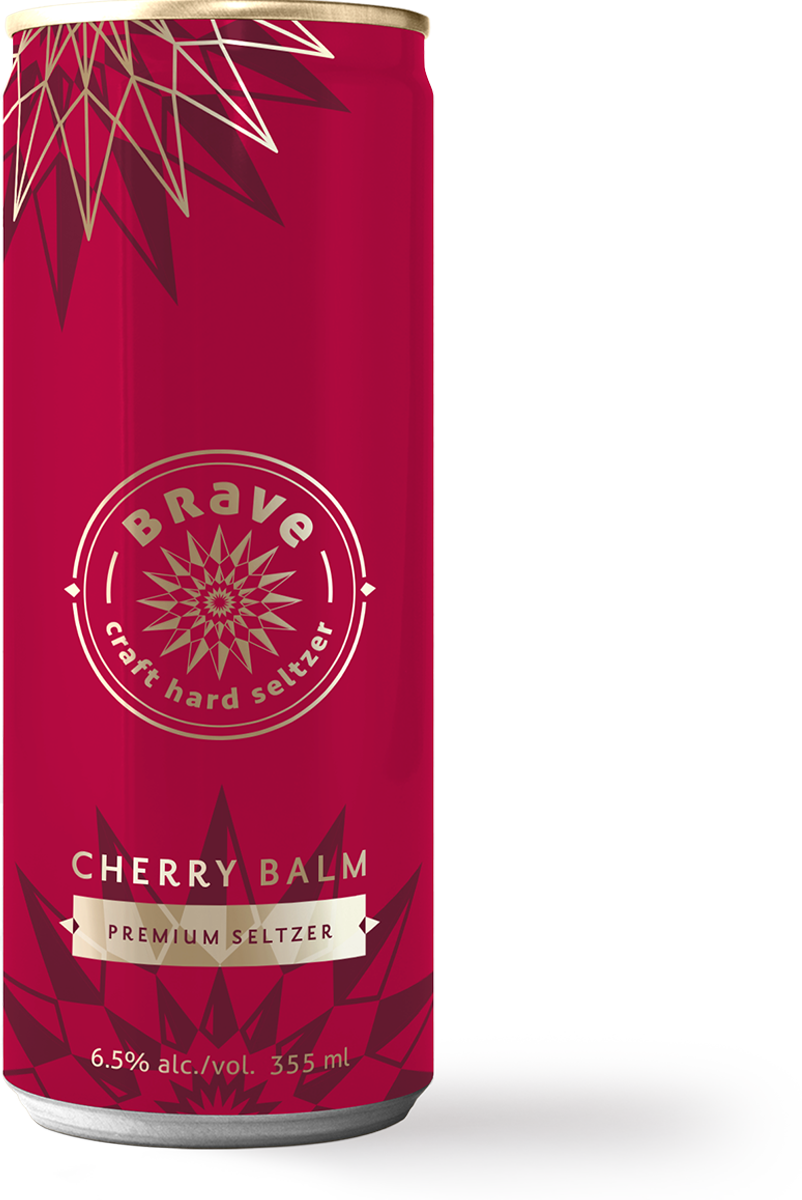 In recent years, the beverage industry has witnessed a surge in the popularity of hard seltzers, with consumers seeking out low-calorie, refreshing alternatives to traditional beer and wine. Amidst this trend, a new player has emerged: fruit wine seltzer. This innovative beverage combines the crisp, bubbly texture of seltzer with the vibrant flavors of fruit wine, creating a unique and refreshing drinking experience.
In recent years, the beverage industry has witnessed a surge in the popularity of hard seltzers, with consumers seeking out low-calorie, refreshing alternatives to traditional beer and wine. Amidst this trend, a new player has emerged: fruit wine seltzer. This innovative beverage combines the crisp, bubbly texture of seltzer with the vibrant flavors of fruit wine, creating a unique and refreshing drinking experience.
But what exactly is a fruit wine seltzer, and how is it made? Simply put, a fruit wine seltzer is a carbonated beverage that blends fruit wine with seltzer water. The fruit wine base is typically made from a variety of fruits, such as apples, pears, berries, or even more exotic options like pineapple or mango. The wine is then diluted with seltzer water to lower the alcohol content and create a light, effervescent drink.
One of the key advantages of a fruit wine seltzer is its lower calorie count compared to traditional wine or beer. Most fruit wine seltzers clock in at around 100 calories per 12-ounce serving, making them an attractive choice for health-conscious consumers. Additionally, the carbonation in seltzer can help create a sense of fullness, potentially leading to reduced overall alcohol consumption.
Several notable brands have emerged in the fruit wine seltzer market, offering a range of enticing flavors and styles. One standout example are some of the products by St. Vrain Cidery located in Colorado. They make great wine seltzer that balances the sweetness of ripe fruit with the crisp, dry finish of a sparkling wine. Another excellent option is the Cherry Balm by Brave Seltzers, located in Nova Scotia, Canada, or the “Pomme Pomme” from 2 Towns Ciderhouse, which blends apple wine with seltzer water for a light, refreshing taste that’s perfect for summer sipping.
For those looking for a more exotic flavor profile, the “Island Vibes” pineapple wine seltzer from Florida Cane Distillery offers a tropical twist on the classic formula. And for berry lovers, the “Berry Spritzer” from Three Brothers Wineries & Estates combines raspberry and blackberry wines with seltzer for a fruity, effervescent treat.

The Production Process
For winemakers curious about trying their hand at making fruit wine seltzer at home, here’s a potential recipe for a commercial-scale production:
General Ingredients and Blending Ratio:
– 100 gallons of fruit wine (e.g., apple, pear, or berry)
– 300 gallons of seltzer water
– Natural flavorings or sweeteners
Instructions:
Crafting a perfect fruit wine seltzer involves a meticulous, multi-step process that requires skill, patience, and attention to detail. From selecting the finest fruits to packaging the final product, each stage plays a crucial role in creating a refreshing, high-quality beverage.
1. Selecting and Preparing the Fruit
The first step in producing fruit wine seltzer is choosing the right fruits. Winemakers carefully select ripe, high-quality fruits that are free from blemishes, mold, or other defects. The specific fruits used can vary depending on the desired flavor profile, but common choices include apples, pears, berries, pineapples, and mangoes.
Once the fruits have been selected, they undergo a thorough cleaning and sorting process to remove any dirt, leaves, stems, or other unwanted materials. This ensures that only the best fruits make it into the final product.
Next, the fruits are crushed or juiced to maximize flavor extraction. Crushing involves breaking down the fruits into smaller pieces, which increases the surface area exposed to the yeast during fermentation. Alternatively, the fruits can be juiced using a press or centrifugal juicer, resulting in a pure, concentrated liquid that’s ready for fermentation.
2. Fermentation
The heart of the fruit wine seltzer production process is fermentation. During this stage, yeast is added to the fruit juice or crushed fruit, which kicks off a complex biological process. The yeast consumes the natural sugars present in the fruit, converting them into alcohol and carbon dioxide.
Winemakers must carefully control the temperature and monitor the fermentation process to ensure optimal results. The ideal fermentation temperature ranges from 60 to 75°F (15 to 24°C), depending on the specific yeast strain and desired flavor profile. Higher temperatures can lead to faster fermentation but may also produce off-flavors or aromas.
Fermentation typically lasts between one to four weeks, depending on the fruit, yeast strain, and desired alcohol content. During this time, winemakers regularly check the sugar levels, pH, and other parameters to track the progress of the fermentation and make any necessary adjustments.
3. Filtration and Clarification
Once fermentation is complete, the young fruit wine undergoes filtration and clarification to remove any remaining yeast, sediment, or other particles. This process helps stabilize the wine and ensures a clear, visually appealing final product.
There are several methods of filtration and clarification, each with its own advantages and drawbacks. Plate and frame filtration involves passing the wine through a series of porous plates, which trap the solid particles while allowing the liquid to pass through. This method is effective but it can be time-consuming and labor-intensive.
Another popular option is cross-flow filtration, which uses a series of membranes to separate the solid particles from the liquid. This method is more efficient and can handle larger volumes of wine, making it well-suited for commercial-scale production.
After filtration, the fruit wine may undergo additional clarification steps, such as fining or centrifugation, to further remove any haze or sediment. The result is a clear, stable base wine that’s ready for blending.
4. Blending with Seltzer Water
To create the final fruit wine seltzer product, the clarified fruit wine is blended with seltzer water in a large tank. The ratio of fruit wine to seltzer water can vary depending on the desired alcohol content and flavor profile, but a common range is 1 part fruit wine to 3-5 parts seltzer water.
Winemakers carefully measure and mix the fruit wine and seltzer water, ensuring a consistent blend throughout the entire batch. They may also make minor adjustments to the blend based on taste tests or laboratory analyses, fine-tuning the flavor, aroma, and mouthfeel of the final product.
5. Carbonation
One of the key characteristics of fruit wine seltzer is its refreshing, bubbly texture, which comes from the addition of carbonation. There are two main methods of carbonating fruit wine seltzer: inline carbonation and tank carbonation.
Inline carbonation involves injecting carbon dioxide into the blended fruit wine seltzer as it flows through a series of pipes or hoses. This method allows for precise control over the level of carbonation and can be easily integrated into the packaging process.
Tank carbonation, on the other hand, involves adding carbon dioxide to the blended fruit wine seltzer in a sealed tank. The mixture is then agitated or circulated to promote the dissolution of the gas into the liquid. This method is simpler and requires less specialized equipment but may result in a less consistent level of carbonation.
Regardless of the carbonation method used, winemakers must carefully monitor and adjust the carbon dioxide levels to achieve the desired level of effervescence in the final product.
6. Packaging and Quality Control
The final step in the fruit wine seltzer production process is packaging and quality control. Before packaging, the carbonated fruit wine seltzer undergoes a final filtration to remove any remaining impurities or sediment that may have formed during the carbonation process.
The filtered fruit wine seltzer is then packaged into cans or bottles using specialized equipment that ensures a sterile, airtight seal. Proper sanitation and quality control procedures are critical at this stage to prevent contamination and ensure a consistent, high-quality final product.
During packaging, winemakers also conduct final tastings and analyses to verify that the fruit wine seltzer meets the desired specifications for flavor, aroma, alcohol content, carbonation level, and other key parameters. Any deviations from the target values are carefully investigated and corrected before the product is released for distribution.
Packaging options for fruit wine seltzer include standard 12-ounce cans, larger 16-ounce cans, and glass bottles of various sizes. The choice of packaging depends on factors such as target market, distribution channels, and brand identity.
After packaging, the fruit wine seltzer is ready for labeling, storage, and distribution. Labels must comply with all relevant regulations, including alcohol content statements, ingredient lists, and health warnings. The finished product is then stored in a cool, dark place until it’s ready to be shipped to retailers or directly to consumers.
From start to finish, the production process for fruit wine seltzer is a complex, multi-faceted endeavor that requires a deep understanding of fermentation science, filtration technology, and packaging processes. By carefully controlling each step of the process and maintaining strict quality standards, winemakers can create a delicious, refreshing beverage that combines the best of both the wine and seltzer worlds.
As the demand for low-calorie, flavorful alcoholic beverages continues to grow, fruit wine seltzer is poised to become an increasingly popular choice among consumers. By staying at the forefront of production techniques and flavor trends, winemakers can capitalize on this exciting market opportunity and create innovative, high-quality products that stand out in a crowded field.
Market Impact and Growth Potential for Fruit Wine Seltzer
As the demand for low-calorie, refreshing alcoholic beverages continues to grow, fruit wine seltzer is poised to make a significant impact on the market. Its combination of natural fruit flavors, lower alcohol content, and bubbly texture appeals to a wide range of consumers, from millennials to health-conscious adults.
In fact, market research firm Nielsen reports that hard seltzer sales grew by a staggering 193% in 2019, with no signs of slowing down. As more consumers discover the appeal of fruit wine seltzer, it’s likely that this trend will continue to gain momentum in the coming years.
So, whether you’re a curious home brewer or a professional winemaker looking to expand your product line, fruit wine seltzer offers an exciting opportunity to explore new flavors and cater to the evolving tastes of today’s consumers. With its refreshing taste and health-conscious appeal, this innovative beverage is sure to make a splash in the world of craft brewing and beyond. And with standout options like Brave Seltzers, 2 Towns Ciderhouse’s “Pomme Pomme,” Florida Cane Distillery’s “Island Vibes,” and Three Brothers Wineries & Estates’ “Berry Spritzer,” there’s never been a better time to dive into the exciting world of fruit wine seltzer.

One thought to “The Rise of Fruit Wine Seltzer: A Refreshing Twist on a Classic”